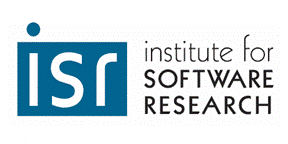
Institute for Software Research
School of Computer Science, Carnegie Mellon University
ORA User's Guide 2019
Neal Altman, Kathleen M. Carley, Jeffrey Reminga
6 June 2019
Center for the Computational Analysis of Social and Organizational Systems
CASOS
This report supersedes CMU-ISR-18-103
"ORA User's Guide 2018", 6 June 2018
ORA is a network analysis tool that detects risks or vulnerabilities of an organization's design structure. The design structure of an organization is the relationship among its personnel, knowledge, resources, and tasks entities. These entities and relationships are represented by the Meta-Matrix. Measures that take as input a Meta-Matrix are used to analyze the structural properties of an organization for potential risk. ORA contains over 100 measures which are categorized by which type of risk they detect. Measures are also organized by input requirements and by output. ORA generates formatted reports viewable on screen or in log files, and reads and writes networks in multiple data formats to be interoperable with existing network analysis packages. In addition, it has tools for graphically visualizing Meta-Matrix data and for optimizing a network’s design structure. ORA uses a Java interface for ease of use, and a C++ computational back end.
The most current edition of ORA software, Version 3, is available in two versions. ORA-LITE is available on the CASOS website. It contains hundreds of social network, dynamic network metrics, trail metrics, procedures for grouping nodes, identifying local patterns, comparing and contrasting networks, groups, and individuals from a dynamic meta-network perspective. ORA-LITE is itself limited to a maximum of 2,000 nodes per entity class. Thus a Meta-Matrix can have 2000 agents, 2000 organizations, and so on. The professional version of ORA, ORA-PRO, which has no limit on the number of nodes and a number of advanced functions is available from Netanomics.
1828 pages
Return to:
SCS Technical Report Collection This page maintained by reports@cs.cmu.edu
School of Computer Science